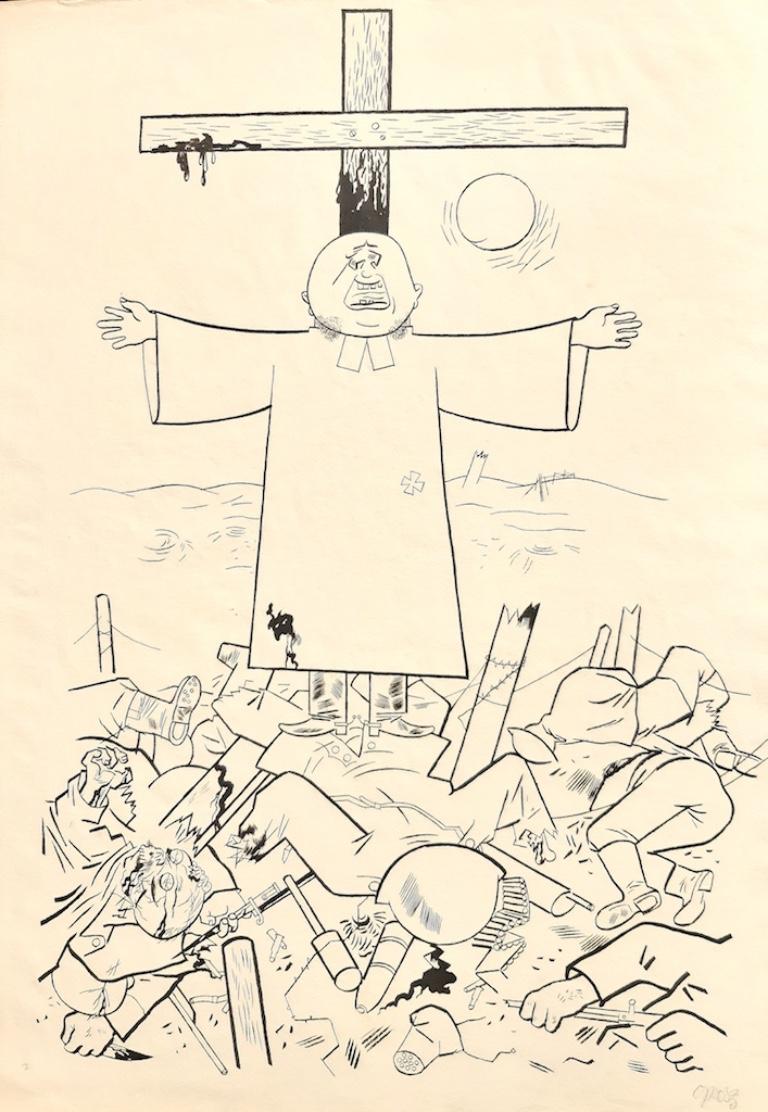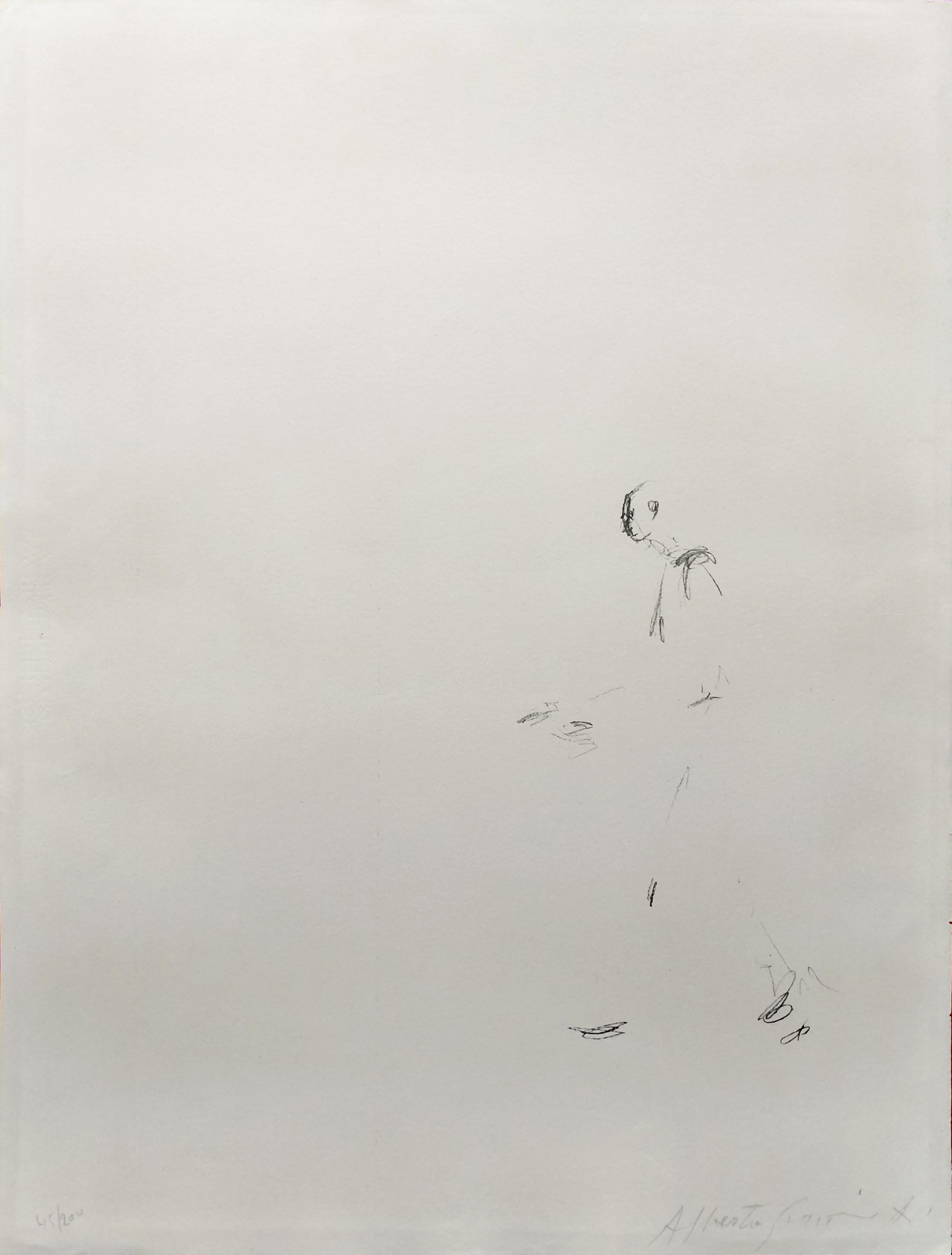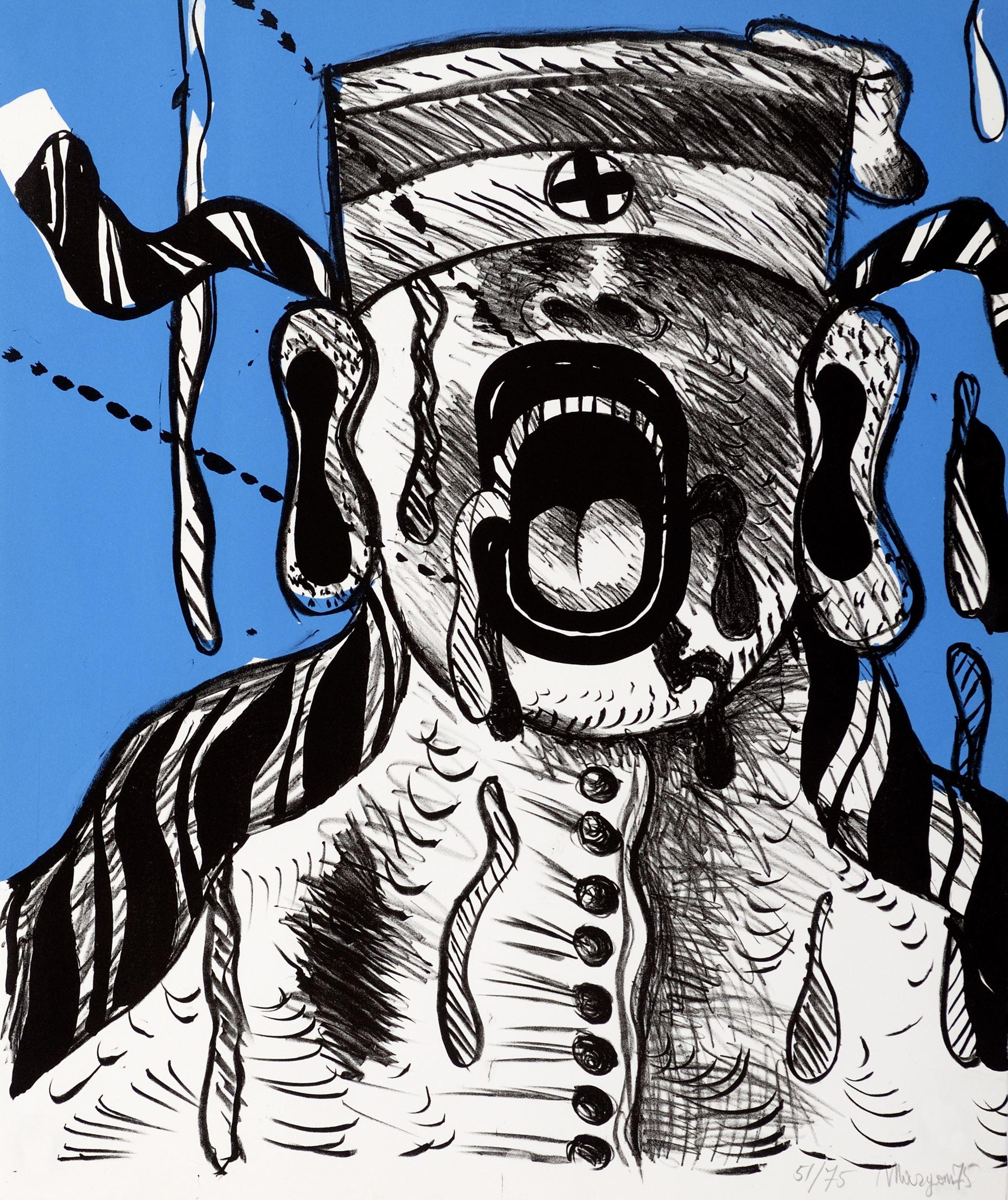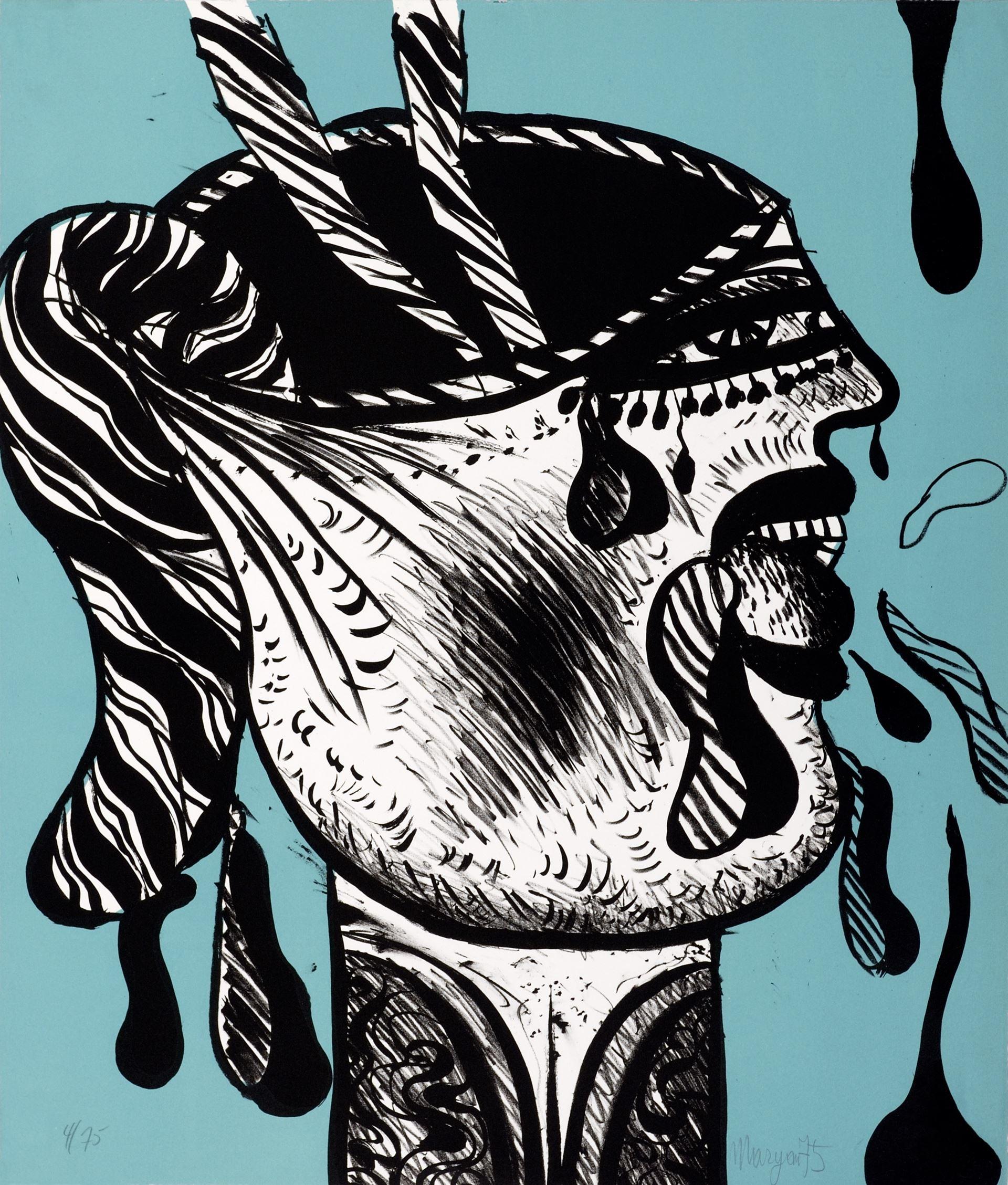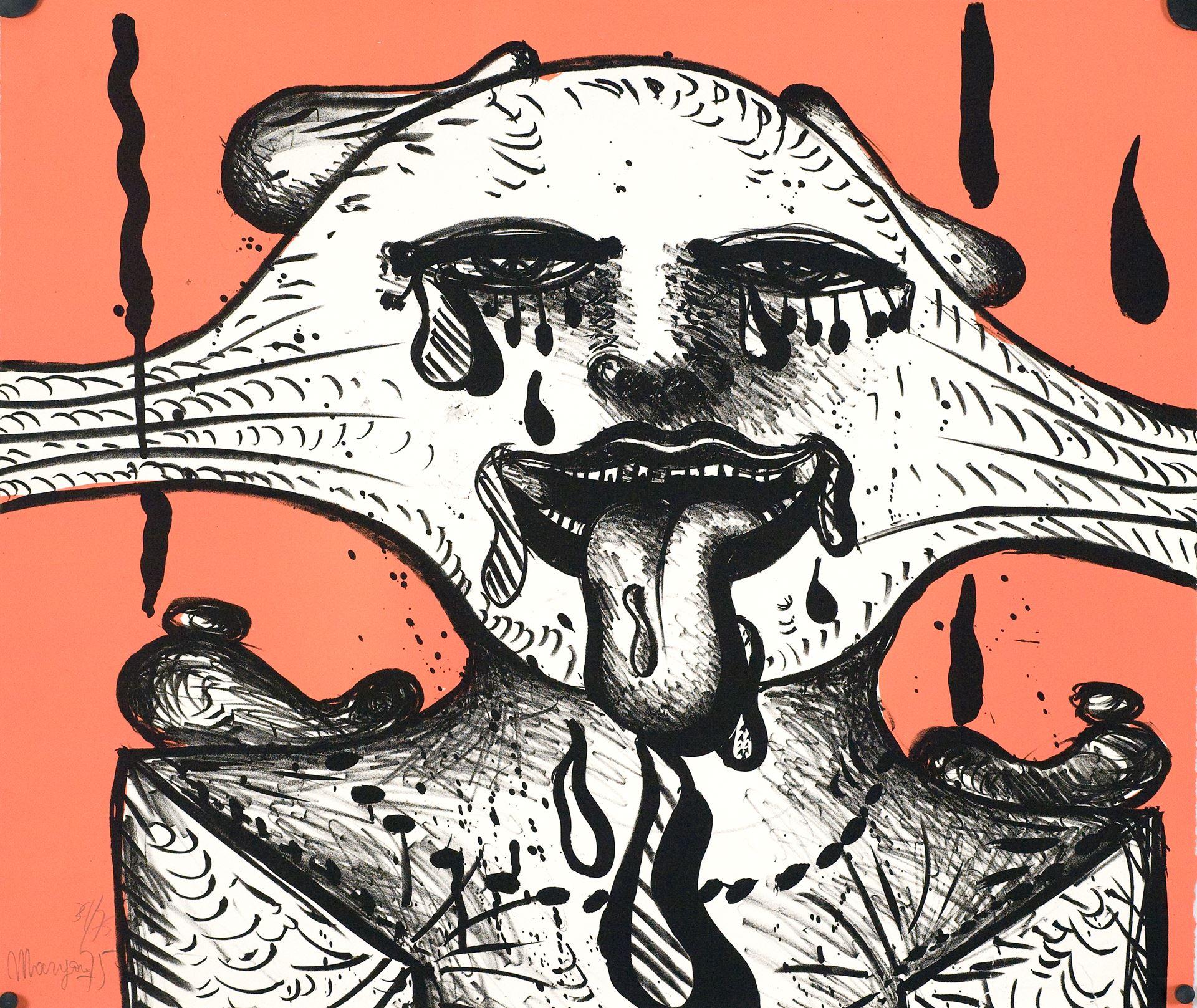Items Similar to Kostume, Plakate, und Dekorationen, "Joachim von Seewitz"
Want more images or videos?
Request additional images or videos from the seller
1 of 3
Walter SchnackenbergKostume, Plakate, und Dekorationen, "Joachim von Seewitz"1920
1920
About the Item
Walter Schnackenberg’s style changed several times during his long and successful career. Having studied in Munich, the artist traveled often to Paris where he fell under the spell of the Henri de Toulouse-Lautrec’s colorful and sensuous posters depicting theatrical and decadent subjects. Schnackenberg became a regular contributor of similar compositions to the German magazines Jugend and Simplicissimus before devoting himself to the design of stage scenery and costumes. In the artist’s theatrical work, his mastery of form, ornamentation, and Orientalism became increasingly evident. He excelled at combining fluid Art Nouveau outlines, with spiky Expressionist passages, and the postures and patterns of the mysterious East.
In his later years, Schnackenberg explored the unconscious, using surreal subject matter and paler colors that plainly portrayed dreams and visions, some imbued with political connotations. His drawings, illustrations, folio prints, and posters are highly sought today for their exceedingly imaginative qualities, enchanting subject matter, and arresting use of color.
SCHNACKENBERG: KOSTUME, PLAKATE UND DEKORATIONEN, a cardboard bound art book consisting of 43 prints of work by Walter Schnackenberg, 30 of which are color lithographs that are signed and some are titled and dated in the plate, as well as black and white prints and photographs with accompanying text by Oskar Bie; lithographs printed at Kunstanstalt Oskar Consee in Munich, other images printed by Gesellschaft Pick & Co. in Munich, the text and cover with color images by Schnackenberg front and verso printed by R. Oldenbourg in Munich; published by Musarion Verlag, Munich, 1920.
The majority of Walter Schnackenberg’s artistic output was destroyed by bomb attacks in Munich in 1944. The highly publicized 2013 auction in New York of the recovered pre-war poster collection once belonging to German poster aficionado, Hans Sachs has reintroduced the world to Walter Schnackenberg’s graphic genius and priceless ephemeral art from a lost era. Besides the museum world, designer Karl Lagerfeld is one of the most prodigious collectors of Schnackenberg. Flipping through the pages of Kostume, Plakate und Dekorationen, it becomes quite clear that Schnackenberg’s collection is ground zero at the crossroads of early modern fashion where the cult of celebrity meets up with dance, music, theater and cabaret, film and the graphic medium. Berlin and Munich under Germany’s Weimar Republic in the first quarter of the 20th century produced just the atmosphere to feed this burgeoning industry. Rising inflation sparked a recklessness to live large for the moment and heightened a desire for escapism. An influx of Indian and East Asian dancers and musicians added to the artsy bohemian cultural mix. A new decadence and tolerance resulted. Film boldly featured provocative subject matter. Cabarets became popular venues giving rise to the demi-monde in which people from all social stations mixed more freely in a thriving underground economy and culture where there was a blurring of boundaries and of social codes. Noted art historian and cultural doyen, Oskar Bie astutely observes in his introduction to Schnackenberg’s publication that what unites the images is fantasy and advertisement. Schnackenberg uses the eye as an instrument to brilliantly construct and convey this double message. His personages never directly confront the viewer. Their eyes gaze off in the distance like those of the screenplayer and film star Hedamaria Scholz in Schnackenberg’s “Die Rodelhexe” movie poster. Their eyes follow the path of a dance composition or become a transfixed and ogling male gaze such as the iconic 1911 Odeon Casino poster. Most of all, their eyes are heavily-lidded and closed unto themselves, to an inner state, a dream, an escape, a fantasy. Whether it is to pass an hour in a cinema, an evening at a cabaret, to attend a modern dance performance or patronize a glitzy club, fantasy is what really is being sold. It is interesting to consider that all of this is sandwiched in between two commercial subjects which is essentially the bread and butter of Schnackenberg’s art book. On the first page, Schnackenberg, the artist, advertises himself. While the female face which he is shown creating takes on a double image with its shadow, suggesting the replicative nature of graphic art, there is only one Schnackenberg. The final color lithograph is a poster Schnackenberg created for Consee, the printer of Kostume, Plakate und Decorationen, who also specialized in printing business materials. In the modern age, the art of business had indeed become the business of art.
- Creator:Walter Schnackenberg (1880 - 1961, German)
- Creation Year:1920
- Dimensions:Height: 13.25 in (33.66 cm)Width: 9.25 in (23.5 cm)
- Medium:
- Movement & Style:
- Period:
- Condition:
- Gallery Location:Chicago, IL
- Reference Number:1stDibs: LU46731518163

About the Seller
5.0
Gold Seller
These expertly vetted sellers are highly rated and consistently exceed customer expectations.
Established in 2013
1stDibs seller since 2016
82 sales on 1stDibs
Typical response time: 2 hours
- ShippingRetrieving quote...Ships From: Chicago, IL
- Return PolicyA return for this item may be initiated within 3 days of delivery.
More From This SellerView All
- Ottokar Mascha Folio, plate 8: "Poster for the 1st Vienna Secession Exhibition"By Gustav KlimtLocated in Chicago, ILAfter GUSTAV KLIMT (1862-1918) THESEUS UND MINOTAURUS, 1898, final design submission for poster advertising the first exhibition of the Vienna Secession, (In Mascha, no. 8) As a cele...Category
1910s Vienna Secession Figurative Prints
MaterialsLithograph
- Ottokar Mascha Folio, plate 18: "Shaw Oder Die Ironie Poster" by Egon SchieleBy Egon SchieleLocated in Chicago, ILafter EGON SCHIELE (1890-1918) SHAW ODER DIE IRONIE POSTER, C. 1912, (In Mascha, no. 18) Schiele’s poster is an advertisement for a lecture to be given ...Category
1910s Vienna Secession Figurative Prints
MaterialsLithograph
- Gerlach's Allegorien Plate #35: "Love & Wine" LithographBy Koloman MoserLocated in Chicago, ILKoloman Moser (1868 –1918), AUSTRIAN Instead of applying his flair and art education solely to painting, Koloman Moser embodied the idea of Gesamt Kunstwerk (all-embracing art work) by designing architecture, furniture, jewelry, graphics, and tapestries meant to coordinate every detail of an environment. His work transcended the imitative decorative arts of earlier eras and helped to define Modernism for generations to come. Moser achieved a remarkable balance between intellectual structure (often geometric) and hedonistic luxury. Collaborating with Gustav Klimt and Josef Hoffmann, the artist was an editor and active contributor to Ver Sacrum, (Sacred Spring), the journal of the Viennese Secession that was so prized for its aesthetics and high quality production that it was considered a work of art. The magazine featured drawings and designs in the Jugendstil style (Youth) along with literary contributions from distinguished writers from across Europe. It quickly disseminated both the spirit and the style of the Secession. In 1903 Moser and Hoffmann founded and led the Wiener Werkstatte (Viennese Workshop) a collective of artisans that produced elegant decorative arts items, not as industrial prototypes but for the purpose of sale to the public. The plan, as idealistic then as now, was to elevate the lives of consumers by means of beautiful and useful interior surroundings. Moser’s influence has endured throughout the century. His design sensibility is evident from the mid-century modern furniture of the 1950s and ‘60s to the psychedelic rock posters...Category
1890s Vienna Secession Figurative Prints
MaterialsLithograph
- Gerlach's Allegorien Plate #30: "Love" LithographBy Koloman MoserLocated in Chicago, ILKoloman Moser (1868 –1918), AUSTRIAN Instead of applying his flair and art education solely to painting, Koloman Moser embodied the idea of Gesamt Kunstwerk (all-embracing art w...Category
1890s Vienna Secession Figurative Prints
MaterialsLithograph
- Kostume, Plakate, und Dekorationen, "Die Rodelhexe"By Walter SchnackenbergLocated in Chicago, ILWalter Schnackenberg’s style changed several times during his long and successful career. Having studied in Munich, the artist traveled often to Paris where he fell under the spell of the Henri de Toulouse-Lautrec’s colorful and sensuous posters depicting theatrical and decadent subjects. Schnackenberg became a regular contributor of similar compositions to the German magazines Jugend and Simplicissimus before devoting himself to the design of stage scenery and costumes. In the artist’s theatrical work, his mastery of form, ornamentation, and Orientalism became increasingly evident. He excelled at combining fluid Art Nouveau outlines, with spiky Expressionist passages, and the postures and patterns of the mysterious East. In his later years, Schnackenberg explored the unconscious, using surreal subject matter and paler colors that plainly portrayed dreams and visions, some imbued with political connotations. His drawings, illustrations, folio prints, and posters are highly sought today for their exceedingly imaginative qualities, enchanting subject matter, and arresting use of color. SCHNACKENBERG: KOSTUME, PLAKATE UND DEKORATIONEN, a cardboard bound art book consisting of 43 prints of work by Walter Schnackenberg, 30 of which are color lithographs that are signed and some are titled and dated in the plate, as well as black and white prints and photographs with accompanying text by Oskar Bie; lithographs printed at Kunstanstalt Oskar Consee in Munich, other images printed by Gesellschaft Pick & Co. in Munich, the text and cover with color images by Schnackenberg front and verso printed by R. Oldenbourg in Munich; published by Musarion Verlag, Munich, 1920. The majority of Walter Schnackenberg’s artistic output was destroyed by bomb attacks in Munich in 1944. The highly publicized 2013 auction in New York of the recovered pre-war poster collection once belonging to German poster aficionado, Hans Sachs has reintroduced the world to Walter Schnackenberg’s graphic genius and priceless ephemeral art from a lost era. Besides the museum world, designer Karl Lagerfeld is one of the most prodigious collectors of Schnackenberg. Flipping through the pages of Kostume, Plakate und Dekorationen, it becomes quite clear that Schnackenberg’s collection is ground zero at the crossroads of early modern fashion where the cult of celebrity meets up with dance, music, theater and cabaret, film and the graphic medium. Berlin and Munich under Germany’s Weimar Republic in the first quarter of the 20th century produced just the atmosphere to feed this burgeoning industry. Rising inflation sparked a recklessness to live large for the moment and heightened a desire for escapism. An influx of Indian and East Asian dancers and musicians added to the artsy bohemian cultural mix. A new decadence and tolerance resulted. Film boldly featured provocative subject matter. Cabarets became popular venues giving rise to the demi-monde in which people from all social stations mixed more freely in a thriving underground economy and culture where there was a blurring of boundaries and of social codes. Noted art historian and cultural doyen, Oskar Bie astutely observes in his introduction to Schnackenberg’s publication that what unites the images is fantasy and advertisement. Schnackenberg uses the eye as an instrument to brilliantly construct and convey this double message. His personages never directly confront the viewer. Their eyes gaze off in the distance like those of the screenplayer and film star Hedamaria Scholz in Schnackenberg’s “Die Rodelhexe” movie poster. Their eyes follow the path of a dance composition or become a transfixed and ogling male gaze such as the iconic 1911 Odeon Casino poster...Category
1910s Expressionist Figurative Prints
MaterialsLithograph
- Kostume, Plakate, und Dekorationen, "Odeon-Casino"By Walter SchnackenbergLocated in Chicago, ILWalter Schnackenberg’s style changed several times during his long and successful career. Having studied in Munich, the artist traveled often to Paris where he fell under the spell of the Henri de Toulouse-Lautrec’s colorful and sensuous posters depicting theatrical and decadent subjects. Schnackenberg became a regular contributor of similar compositions to the German magazines Jugend and Simplicissimus before devoting himself to the design of stage scenery and costumes. In the artist’s theatrical work, his mastery of form, ornamentation, and Orientalism became increasingly evident. He excelled at combining fluid Art Nouveau outlines, with spiky Expressionist passages, and the postures and patterns of the mysterious East. In his later years, Schnackenberg explored the unconscious, using surreal subject matter and paler colors that plainly portrayed dreams and visions, some imbued with political connotations. His drawings, illustrations, folio prints, and posters are highly sought today for their exceedingly imaginative qualities, enchanting subject matter, and arresting use of color. SCHNACKENBERG: KOSTUME, PLAKATE UND DEKORATIONEN, a cardboard bound art book consisting of 43 prints of work by Walter Schnackenberg, 30 of which are color lithographs that are signed and some are titled and dated in the plate, as well as black and white prints and photographs with accompanying text by Oskar Bie; lithographs printed at Kunstanstalt Oskar Consee in Munich, other images printed by Gesellschaft Pick & Co. in Munich, the text and cover with color images by Schnackenberg front and verso printed by R. Oldenbourg in Munich; published by Musarion Verlag, Munich, 1920. The majority of Walter Schnackenberg’s artistic output was destroyed by bomb attacks in Munich in 1944. The highly publicized 2013 auction in New York of the recovered pre-war poster collection once belonging to German poster aficionado, Hans Sachs has reintroduced the world to Walter Schnackenberg’s graphic genius and priceless ephemeral art from a lost era. Besides the museum world, designer Karl Lagerfeld is one of the most prodigious collectors of Schnackenberg. Flipping through the pages of Kostume, Plakate und Dekorationen, it becomes quite clear that Schnackenberg’s collection is ground zero at the crossroads of early modern fashion where the cult of celebrity meets up with dance, music, theater and cabaret, film and the graphic medium. Berlin and Munich under Germany’s Weimar Republic in the first quarter of the 20th century produced just the atmosphere to feed this burgeoning industry. Rising inflation sparked a recklessness to live large for the moment and heightened a desire for escapism. An influx of Indian and East Asian dancers and musicians added to the artsy bohemian cultural mix. A new decadence and tolerance resulted. Film boldly featured provocative subject matter. Cabarets became popular venues giving rise to the demi-monde in which people from all social stations mixed more freely in a thriving underground economy and culture where there was a blurring of boundaries and of social codes. Noted art historian and cultural doyen, Oskar Bie astutely observes in his introduction to Schnackenberg’s publication that what unites the images is fantasy and advertisement. Schnackenberg uses the eye as an instrument to brilliantly construct and convey this double message. His personages never directly confront the viewer. Their eyes gaze off in the distance like those of the screenplayer and film star Hedamaria Scholz in Schnackenberg’s “Die Rodelhexe” movie poster. Their eyes follow the path of a dance composition or become a transfixed and ogling male gaze such as the iconic 1911 Odeon Casino...Category
1910s Expressionist Figurative Prints
MaterialsLithograph
You May Also Like
- Je sens monter en moi des chants de plaisir (I Feel Songs of Pleasure Rise in MeBy Théo TobiasseLocated in San Francisco, CAArtist: Theo Tobiasse (French/Israeli, 1927-2012) Title: Je Sens monter en moi des chants de plaisir (I Feel Songs of Pleasure Rise in Me) Year: Circa 1980 Medium: Color lithograp...Category
1980s Expressionist Figurative Prints
MaterialsPaper, Lithograph
- They Thunder forth from Their Clouds-Lithograph by George Grosz - 1922By George GroszLocated in Roma, ITThey Thunder forth from Their Clouds is an original lithograph, realized by George Grosz in 1922, from Die Raüber, edition Malik Verlag in 100 prints, plate n°8 da Die Raüber, hand-signed in pencil. "They thunder forth from their clouds about gentleness and forbearance, while they sacrifice human victims to the God of love." (Da donnern sie Sanftmut und Duldung aus ihren Wolken und bringen dem Gott der Liebe Menschenopfer.)" Sheet dimension: 61,5 x 42 cm. In very good conditions. Here representing a man in front of cross miserably praying, below of his feet laid down many dead bodies and ruined part of the city. here is one of his artwork affected by consequences drama of war. George Grosz (1893 -1959) was a German artist known especially for his caricatural drawings and paintings of Berlin life in the 1920s. He was a prominent member of the Berlin Dada and New Objectivity group during the Weimar Republic. He studied drawing at the Dresden Academy 1909-11 and at the School of Arts and Crafts in Berlin 1912-14, He was in the army 1914-15 and again for a short time in 1917, but spent the rest of the war in Berlin where he made violently anti-war drawings...Category
1920s Expressionist Figurative Prints
MaterialsLithograph, Paper
- L'HOMME QUI MARCHE (WALKING MAN)By Alberto GiacomettiLocated in Aventura, FLHand signed and numbered in pencil. Edition of 200 on Arches. Artwork is in excellent condition. Certificate of Authenticity is included. Additional images are available upon request...Category
1950s Expressionist Figurative Prints
MaterialsLithograph, Paper
- Pinchas Burstein ¨Maryan¨, "Untitled", 1975, Lithograph, 24.4x20.9 in n1By Pinchas MaryanLocated in Miami, FLPinchas Burstein ¨Maryan¨ (Polonia, 1927-1977) 'Sin título (azul)', 1975 Lithograph on paper 24.5 x 20.9 in. (62 x 53 cm.) Edition of 75 ID: BUR1102-001-075Category
1970s Expressionist Prints and Multiples
MaterialsPaper, Etching, Screen, Lithograph
- Pinchas Burstein ¨Maryan¨, "Untitled", 1975, Lithograph, 24.4x20.9 in n2By Pinchas MaryanLocated in Miami, FLPinchas Burstein ¨Maryan¨ (Polonia, 1927-1977) 'Sin título (verde)', 1975 Lithograph on paper 24.5 x 20.9 in. (62 x 53 cm.) Edition of 75 ID: BUR1102-002-075Category
1970s Expressionist Prints and Multiples
MaterialsEtching, Lithograph, Paper, Screen
- Pinchas Burstein ¨Maryan¨, "Untitled", 1975, Lithograph, 20.9x24.4 in n4By Pinchas MaryanLocated in Miami, FLPinchas Burstein ¨Maryan¨ (Polonia, 1927-1977) 'Sin título (carmín)', 1975 Lithograph on paper 20.9 x 24.5 in. (53 x 62 cm.) Edition of 75 ID: BUR1102-004-075Category
1970s Expressionist Prints and Multiples
MaterialsPaper, Etching, Screen, Lithograph
Recently Viewed
View AllMore Ways To Browse
De Von
Antique Star Wars
Antique Print Club
Black White Lid
Karl Lagerfeld Prints
Von Hans
Black And White Museum Poster
Antique Movie
Large Fashion Posters
Casino Print
Antique The Movie
Art Nouveau Large Print
Indian Movie
Berlin Music Poster
Dior Fashion Illustration
Prints Of Bread
20th Century Advertisement Poster
Fashion Large Print Poster

